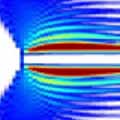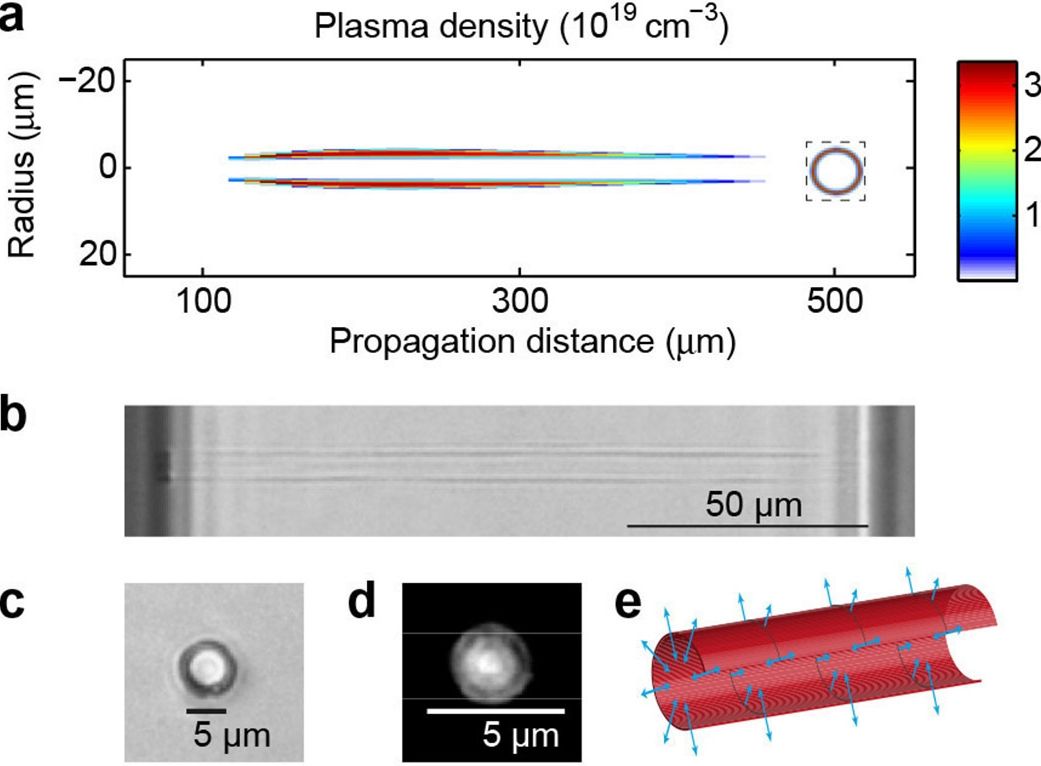Non-diffracting Bessel vortex beams exhibit diverse propagation regimes in glass that can be observed with a novel imaging strategy.

High-power femtosecond pulses have become a key tool in processing of transparent materials (e.g., glass and sapphire) for the present and the next generation of consumer electronics.1 Associated major industrial challenges include high-quality and high-speed cutting of screen glass for smartphones, camera windows, or drilling of through-vias (vertical interconnect access) in interposers for the circuitry of 3D electronic chips. Ultrafast laser pulses (on picosecond or femtosecond timescales) allow for structuring transparent materials with high levels of accuracy. When the laser pulses propagate into the transparent dielectrics, they usually undergo high distortions.2 These distortions arise because of the nonlinear Kerr self-focusing effect and because of the interaction of the pulse with the plasma, which the pulses generate in the material. The propagation is therefore highly nonlinear and prevents uniform energy deposition along the beam propagation.
